
Berkeley Midwinters as Good as It Gets
Weekend #4 of the Berkeley Yacht Club Midwinters was as good as winter racing on San Francisco Bay gets — but it did not start out that way.
Saturday’s Race
Saturday started glassy with winds at 1-2 knots and a postponement. So, we waited. In the meantime, somewhat full but slow-moving spinnakers could be seen a couple of miles to the west between Angel Island and Alcatraz. About 45 minutes into the postponement, we decided to pick up and head that way. No sooner had the westward caravan started than a clear and decisive wind line appeared just east of Angel and headed our way. We stopped and dropped about a half mile west of our original location and set up the course. For the rest of the day the wind held steady at 8-9 knots.
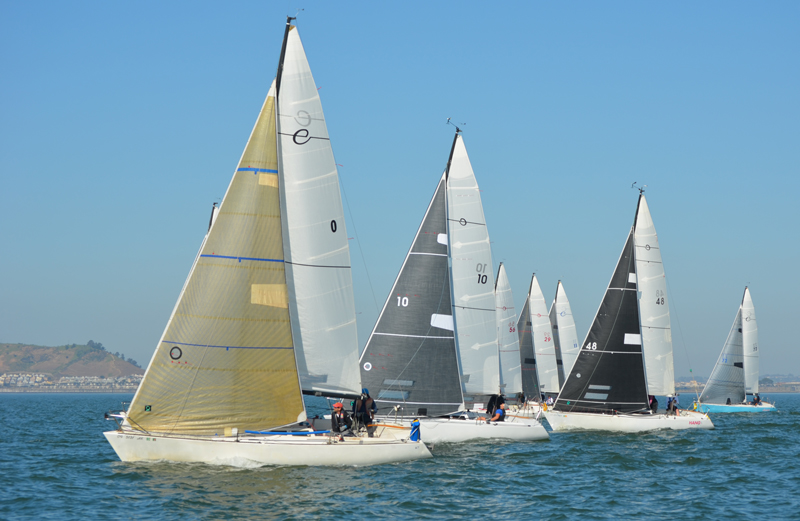
That Saturday we had five divisions with a total of 29 boats, including a one-design class of Express 27s. All of Saturday’s starts were clean, and everyone finished.
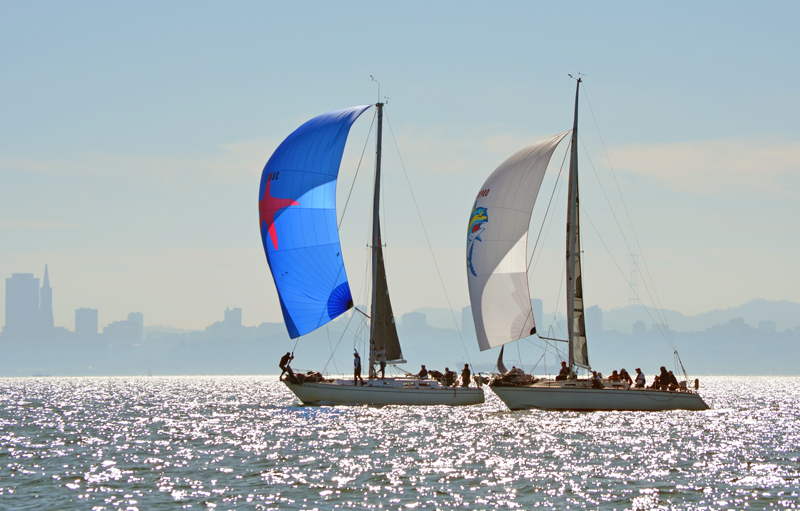
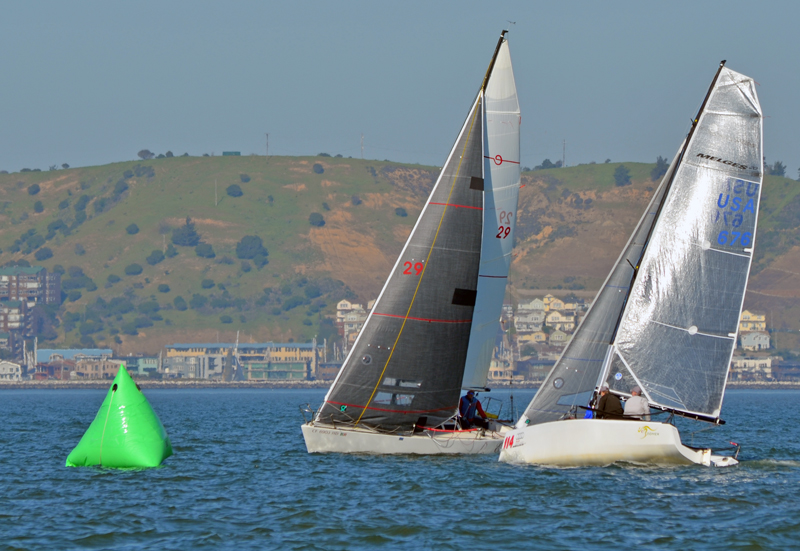
Sunday’s Race
Super Bowl Sunday’s race started out perfect and stayed that way, with wind at 8-12 out of the NNW and steady all day. We had seven divisions totaling 27 boats on the water, including the double- and singlehanded divisions and the Alerion 28 one-design division. We even had four singlehanders out on the course on Sunday with all but one running downwind wing on wing sans spinnaker. Our one lone spinnaker jockey was Jackie Philpott. She wrangled her Cal 2-27, Dura Mater, down the course with a full spinnaker in 12 knots of breeze.
It was good racing and a surprisingly good turnout considering it was Super Bowl Sunday.
Check results for both series on Jibeset. See more of Glen Garfein’s photos from Saturday, February 12, here. The series will conclude with a Winners Race on Sunday, February 27. The podium finishers of each division will face off to determine who is the Champion of Champions.
Join Nicki Bennett and Olivia Wyatt on Good Jibes #28
Welcome back to Good Jibes! This week’s host, Nicki Bennett, is joined by Olivia Wyatt to chat about finding the beauty in nature and yourself through sailing. Olivia is an award-winning filmmaker, TV producer, writer, and USCG 50-Ton Master-certified captain with over 20,000 nautical miles of offshore sailing experience.
Hear how to become more confident as a sailor, how sailing can inspire your creative work, about the strength of the sailing community, how sailors can make a positive impact on the environment, and what Olivia learned singlehanding from San Diego to Hawaii.
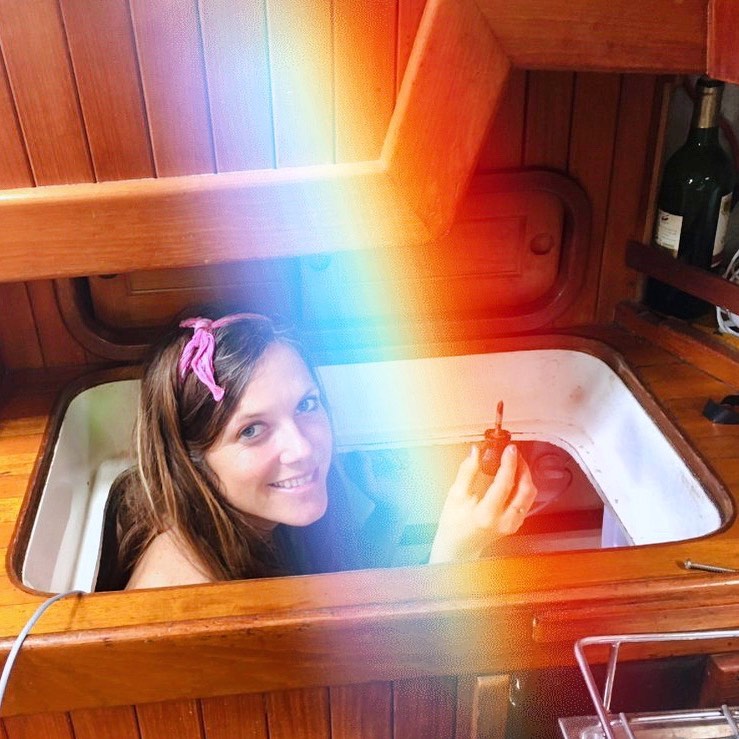
Here’s a small sample of what you will hear in this episode:
- How long did Olivia own a boat before she singlehanded from San Diego to Hawaii?
- What was her biggest lesson on that trip to Hawaii?
- How does filmmaking fit into her life as a sailor?
- What’s the easiest way you can reduce your use of plastic?
- How does being a sailor influence Olivia’s creative work?
- Why are there more singlehanding males than females?
- How has modernization impacted the communities Olivia’s traveled to?
- Short Tacks: What does she keep in her ditch bag?
Learn more about Olivia at WildernessOfWaves.com and Instagram @WildernessOfWaves.
Then listen to the episode on Apple Podcasts, Spotify, Google Podcasts, and your other favorite podcast spots — follow and leave a 5-star review if you’re feeling the Good Jibes!
EWOL Propellers — Setting the Pitch
For more information visit Ewol Propellers.
S.F. Maritime National Historical Park Passes Visitation Milestone
In 2021, the San Francisco Maritime National Historical Park surpassed a visitation milestone of 125 million accumulated recreation visits since its establishment in 1988. Across that year alone, despite the COVID restrictions, more than 2.8 million visitors visited the park — an increase of one million visitors since the beginning of the pandemic.
The park is a favorite among locals, and a popular tourist destination. Jonathan Dille, Acting Superintendent of San Francisco Maritime National Historical Park, said, “Each year, millions of visitors from around the country and the world visit San Francisco to experience the thrilling sights and sounds of our urban waterfront. As a park, we are proud of the contributions our dedicated staff and volunteers make to bring the rich maritime history of San Francisco to life.”
The park encompasses a fleet of historic vessels, including the 1886 square-rigger Balclutha, the 1895 schooner C.A. Thayer, the 1890 steam ferryboat Eureka, the 1891 scow schooner Alma, and others. In addition to touring the ships, visitors can learn more at the Visitor Center, Maritime Museum and the Maritime Research Center —although appointments are required for the latter — along with the historic Aquatic Park District. With facilities like these, it’s no wonder the site has enjoyed such high visitation numbers.
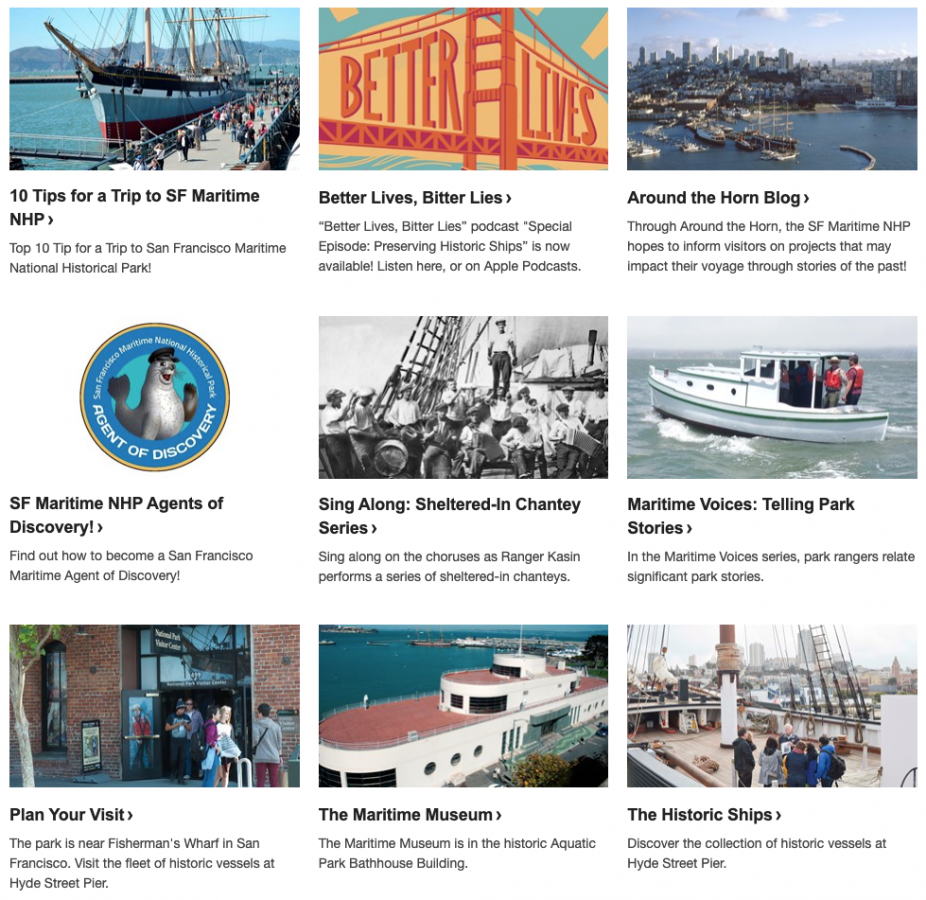
According to a 2020 NPS Visitor Spending Effects Report, in 2020, the 1.9 million park visitors to San Francisco Maritime National Historical Park spent $49.2 million in gateway communities, which in turn supported 500 local jobs. While some of the most well-known national parks again had record visitation in 2021, numbers across the entire National Park System remained below pre-pandemic totals, as shown in the latest National Park Service-published visitation statistics for 2021. Of 423 parks in the National Park System, just 25 received more than 50 percent of the system’s total 297.1 million recreation visits in 2021. Last year’s visitation increased by 60 million over 2020, when COVID-19 shuttered facilities in most parks for at least part of the year.
We’re fortunate to live within reach of such an outstanding facility. And what’s more, the S.F. Maritime National Historical Park supports education with free educational opportunities for students of all ages, ranging from curricula for the classroom to ranger- and teacher-led programs.
The ships are open year-round, so if you haven’t visited the park, we encourage you to do so.
And, as we’ve been on a bit of a historical-photo mission of late, here’s a video created by the S.F. Maritime National Historical Park that talks about the many ships that became buried beneath San Francisco neighborhoods after the Gold Rush had subsided.
For an in-depth look at visitation statistics, please visit the National Park Service Social Science website. For national summaries and individual park figures, please visit the National Park Service Visitor Use Statistics website.
The End of the Anchor-Out Era on Richardson Bay: Part 2
As demand for action on long-term anchor-outs has trickled down from state to local authorities, resentment by a small but vocal group in the anchor-out community toward law enforcement, and specifically toward former harbormaster Curtis Havel and the RBRA, took root.
There have been accusations of “trespassing, grand theft, creating Bay fill, and destruction of property” against the RBRA stemming from the confiscation and destruction of boats. Last year, a supervisor with the Army Corps of Engineers was charged with battery when an activist tried to block a houseboat from being crushed. “There’s been a level of violence on the water,” said one commenter during an RBRA public meeting in October 2021, shortly before Havel’s departure. “You have left some people with absolutely nothing. You can’t be OK with that.”
At the same October 2021 public meeting, many people spoke in support of Havel. “We appreciate the professionalism you’ve brought to this role, and a very even-handed approach to a very challenging situation,” said one commenter. The RBRA’s board of directors passed a “resolution of appreciation” for Havel’s service. The Marin Independent Journal wrote an editorial in praise of Havel, saying he was always “between a rock and a hard place. Havel’s job was to ‘get tough’ during a time when compassion was required. Despite threats and ultimatums, he threaded the needle, did the job and deserves the credit heaped on him by peers, bosses and elected officials.”
“Ultimately, somebody has got to make the call and be the bad guy,” Havel told us. “Maybe it’s the BCDC or the State Auditor. Or it was me, because I was the personification of all that policy. But somebody has to draw and hold the line.” Havel said he believes that the RBRA is now at a critical juncture. “We all understand the rules and regulations. [The question now is], will the RBRA enforce them? If we’re going to do this thing, we need to be consistent so that everyone understands what we’re doing.”
We asked Havel if he was surprised at how contentious his role as harbormaster had been. “I expected resistance and controversy. What was surprising were the false narratives, misinformation and outright lies.”
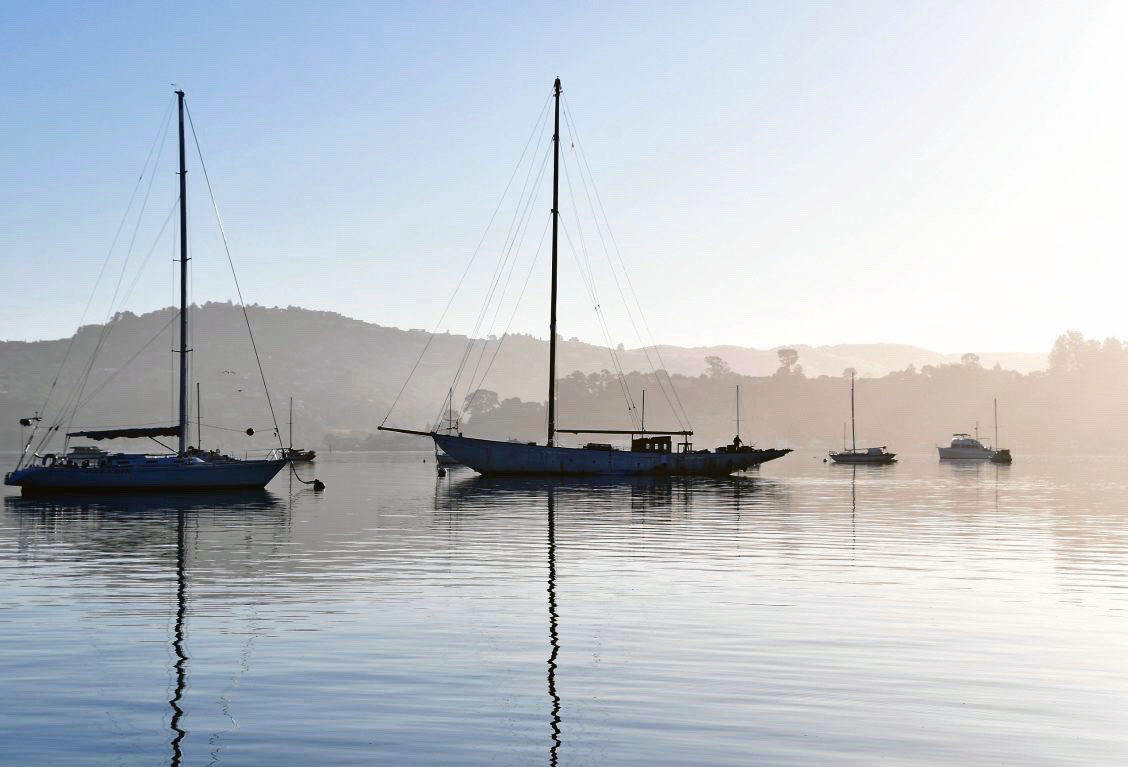
Some anchor-outs and activists have accused the RBRA of making people homeless through the confiscation of boats. “During my tenure as harbormaster, the RBRA did not make anyone homeless,” Havel told us. “In several instances, people lost the vessel they were occupying due to a combination of inclement weather and poor, or lack of, vessel maintenance. Mother Nature made them homeless.” RBRA interim executive director Steve McGrath told us that “vessels that were confirmed as occupied were never removed.”
Moving forward to the 2026 deadline for all anchor-outs, McGrath said, “It’s important to recognize that no one should fear that, if they legitimately live on their boat and go to shore, we will swoop in and take that vessel while they are not there.”
We’d like to say here that by no means does Latitude 38 have its “finger on the pulse” of Richardson Bay, nor have we spent much time on the water there, other than transiting through. We’ve never witnessed a boat being confiscated. The best we can do is to present what each side has told us, and we admit the limitations of this kind of reporting.
An anchor-out sent us a video of now-acting harbormaster Jim Malcolm — who was formerly Havel’s assistant — cutting the anchor line from a vessel, which led to an accusation of absconding with a boat and creating Bay fill. “What has happened over the last year,” Havel said, “is that when we remove an abandoned vessel from the anchorage, if we’re not efficient and timely, people will stage some kind of physical protest. I’m not sworn law enforcement, and I’m not looking for a confrontation. We simply didn’t have time to pull the anchor, because if we did, we ran the risk of being in a physical altercation.”
Havel told us that to him, the situation on the water is crystal-clear. “It’s a 72-hour anchorage, and we’ve been telling people to leave. But some people want to be obtuse and argumentative. A small group of people have co-opted this commons to make it their residence.”
It is the concept of making one’s residence on the water and outside a marina that remains contentious, even though the idea has been long debated at the state and local level, and in the pages of Latitude. A small handful of people have told us that they believe the RBRA is a “fundamentally unconstitutional government entity that has no jurisdiction.” It is alarming to see even a small group reject an entire government agency, though in the current political climate, it is not unprecedented. A functioning government requires some degree of faith. Latitude has a long history of raising a middle finger to anything we deemed to be an onerous bureaucracy, but at what point does skepticism veer from healthy to conspiratorial?
Comprising the County of Marin and the cities of Mill Valley, Tiburon and Belvedere, the RBRA is represented by an elected official from each city, with the executive director and harbormaster rounding out the staff. There is skepticism around the RBRA’s “hybrid” nature, which is officially known as a Joint Powers Agency. The BCDC said that the RBRA was “formed to implement the Richardson Bay Special Area Plan [which was created in 1984, when regulations around anchor-outs began] cooperatively with BCDC.”
Bill Price, former RBRA harbormaster of 24 years, told us that when he came on the job, there were over 20 sunken boats on Richardson Bay. Price said at the time, the RBRA was a “bare-bones operation with a life-support budget.” Price said he had to apply for grants to remove derelict vessels, and had an unpaid, volunteer crew to help him remove and destroy derelict vessels. Price also said that patrolling such a large portion of the Marin coastline requires at least two full-time sworn deputies, and the budget to properly finance operations.
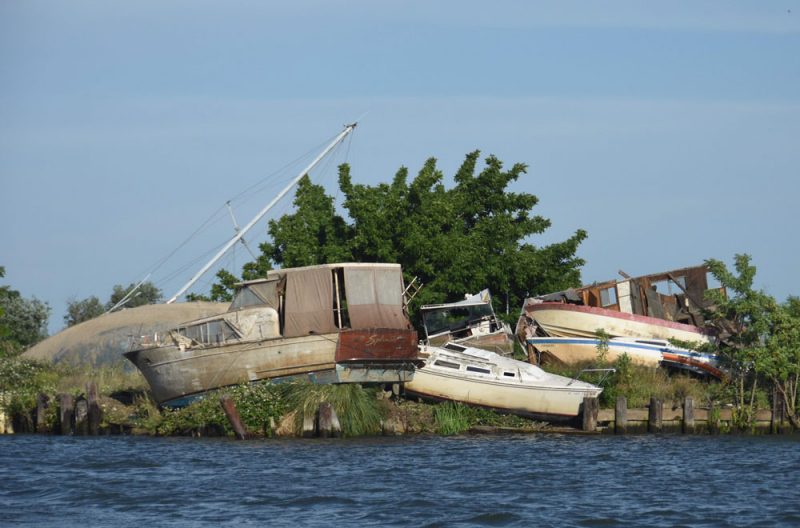
In 1988, the lawsuit “The Mariners of Richardson Bay vs. the RBRA” challenged the constitutionality of the 72-hour anchoring law, officially known as Regional Ordinance No. 87-1. The plaintiffs also sought protection under the Endangered Species Act, which makes it unlawful to take or harass any species covered under the act. The lawsuit was ultimately dismissed, and the dismissal was upheld on appeal. “The legitimacy argument is just that — an unfounded argument,” Steve McGrath told us.
The most common refrain from anchor-outs skeptical of the RBRA’s jurisdiction is that the US Coast Guard is the one and only authority on Richardson Bay. Designated by the federal government as a “Special Anchorage” in 1969, Richardson Bay is defined as an “area where vessels 65-ft or less are not required to make sound signals while anchored, or display anchor lights as would otherwise be required under the navigation rules.” The official code section, 33 CFR 110.126a, has a “note” attached, which reads, “Mariners anchoring in the special anchorage area should consult applicable ordinances of the Richardson Bay Regional Agency and the County of Marin. These ordinances establish requirements on use of anchored and moored vessels within the special anchorage area.”
At the October 2021 meeting, RBRA board member Steve Block, the Belvedere representative, asked a Coast Guard officer: “Is there any law — that comes within your jurisdiction, or that has been promulgated by Congress — that would preclude the RBRA from, for example, enforcing the 72-hour limit on Richardson Bay?”
“I’m not aware of any such conflict,” the officer answered.
“You’re very comfortable that the RBRA does have the authority, provided that it’s a duly organized organ of the State of California, to enforce the 72-hour limit on Richardson Bay?” “Yes sir,” the officer answered, referencing the note specifying the RBRA and Marin County’s ability to make local regulations within the federal anchorage.
Though we often hear assertions that the Coast Guard is the only authority on Richardson Bay, we never hear a discussion of what might happen if they were in charge. Would a militarized agency, which writes tickets for expired registration, flares and insufficient lifejackets, tolerate a group of boats permanently occupying federal waters? In this hypothetical, does anyone really believe that the Coast Guard would offer a haven for anchor-outs?
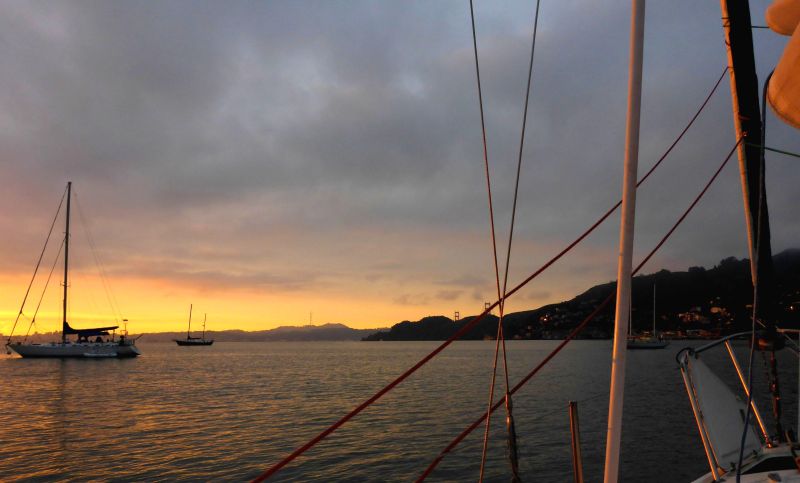
There are currently two $1-million-dollar lawsuits against Curtis Havel and the RBRA; one suit alleges that Havel “illegally seized and destroyed a 25-foot power boat, engine and skiff in November 2019, and that Havel illegally boarded the vessel to post a 10-day notice of marine debris instead of placing it on the hull.” (We reached out several times to the lawyer representing the plaintiff to ask about the details of the case, but did not hear back.) About the case in question, Havel said, “The RBRA has not removed or disposed of the vessel that [the plaintiff] claims was [their] primary domicile.”
Steve McGrath said he is “not concerned” about any precedent that might be set based on the outcome of the lawsuit against the RBRA.
In July 2021, the City of Oakland paid out a $280,000 settlement to two plaintiffs who said that the Oakland Police Department had violated their rights by seizing and destroying their vessels. “Without admitting liability and to avoid further litigation, [the settlement] is in the best interest of the city,” an Oakland attorney said in a statement.
“Now that such a settlement has been made, there is absolutely no incentive for anchor-outs to leave,” said Brock de Lappe, a longtime Estuary harbormaster. After a major cleanup in 2013, there are now as many as a dozen boats on the Estuary, with the core flotilla moored behind Coast Guard Island in Alameda.
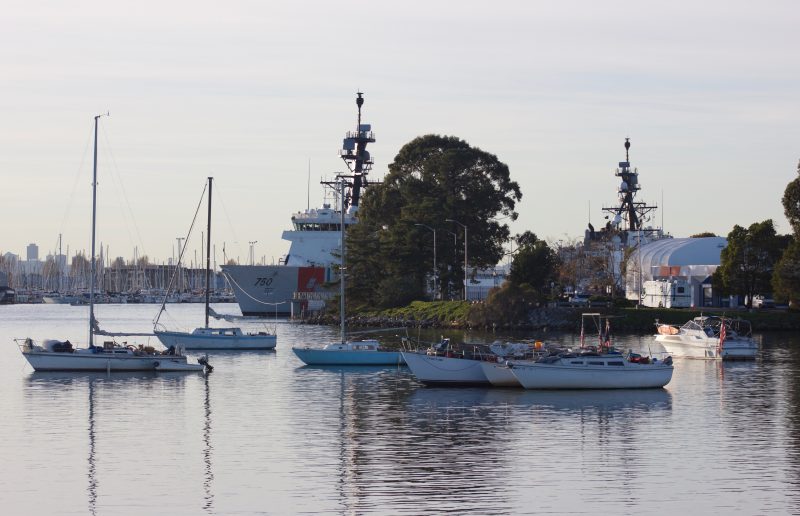
We reached out to the Oakland Police department and the mayor’s office dozens of times to ask if the 2021 settlement had changed their enforcement strategy, or led to the recent proliferation in boats; they did not respond to our requests. In 2019, OPD marine patrol officer Kaleo Albino told us, “[Taking boats] is not a part of the job I enjoy — taking away someone’s property is a bittersweet part of cleaning up the Estuary. That’s where I go with my due diligence with marking and tagging boats, especially if it’s my integrity in question. I like to say I do things with a decent manner.”
De Lappe was involved in a $7-million, multi-agency Estuary cleanup in 2013; he said there were as many 50 anchored-out boats, more than half of which were occupied. “The agencies involved at that time — such as the EPA, State Lands Commission and Coast Guard — made it clear that this was a one-time operation, and that the future of the Estuary was dependent on rigorous and consistent enforcement. The longer this current group of anchor-outs grows, the more expensive it will be to deal with it. We’ve seen what’s happened on Richardson Bay.”
Please click here for Part 1 of this series, and here for Part 3.
Hey, Skipper
Following Sunday’s Corinthian pursuit race we went for a little extra spin and crossed tacks with the Santa Cruz 52 Lightning with an attentive skipper keeping an eye on crossing traffic. You just can’t start sailing too young.
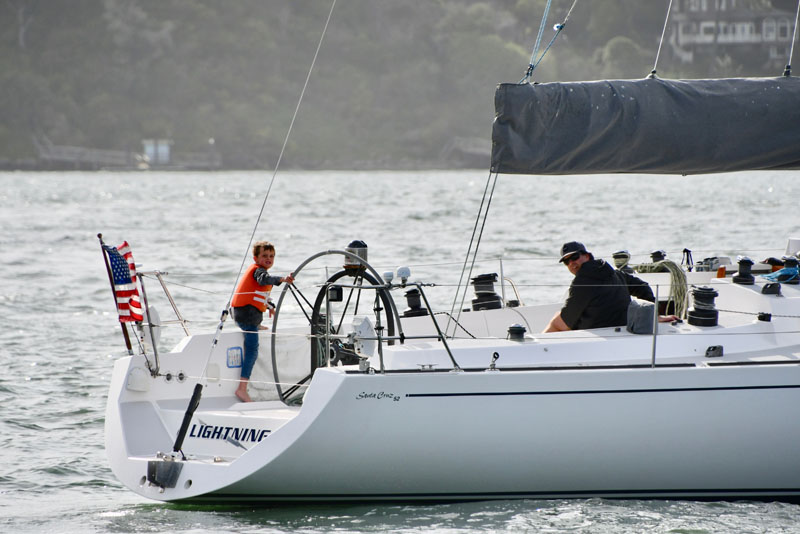
Nice work, skipper!
